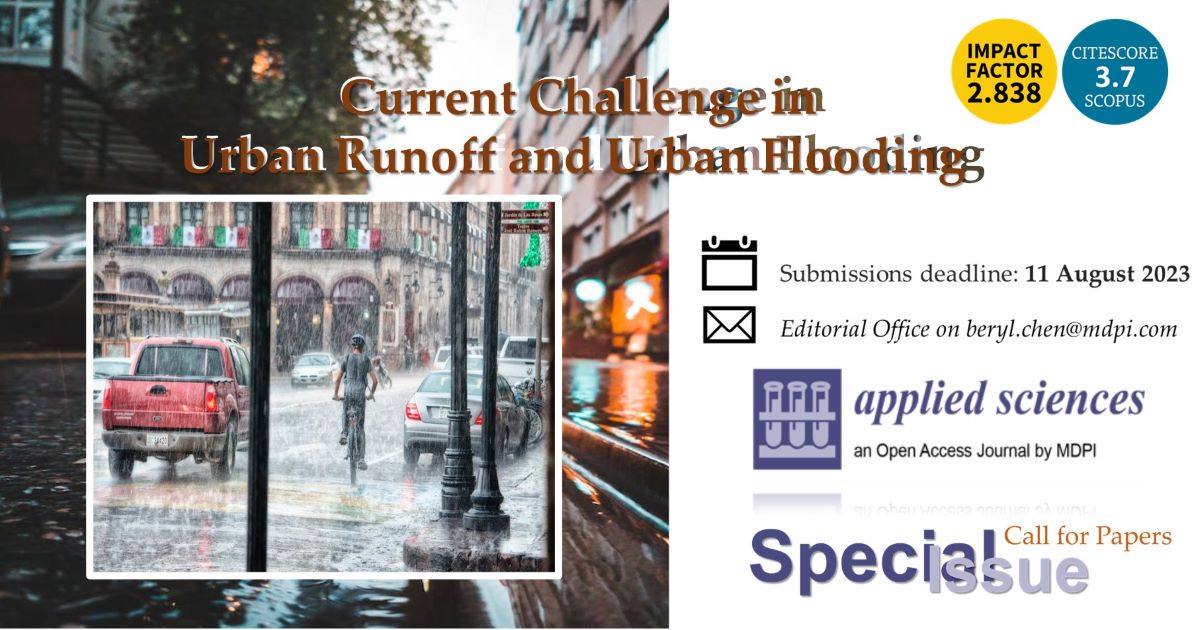Current Challenge in Urban Runoff and Urban Flooding
A special issue of Applied Sciences (ISSN 2076-3417). This special issue belongs to the section "Environmental Sciences".
Deadline for manuscript submissions: closed (11 August 2023) | Viewed by 831

Special Issue Editor
Interests: urban nonpoint source pollution; water pollution; stormwater management; stormwater risk assessment; sponge city; low-impact development
Special Issues, Collections and Topics in MDPI journals
Special Issue Information
Dear Colleagues,
Urban flooding is now prevalent in many urban areas due to global climate change, and many cities have suffered from heavy storms during rainy seasons. Meanwhile, urban runoff contains large amounts of pollutants, and it has become a major source of urban water pollution worldwide. Urban runoff regulation and pollution control are essential to ensure a safe water environment for urban living.
Urban runoff management should focus on both the stormwater quantity and quality and hence, mitigate urban flooding and improve received water quality. Further, water scarcity is a common phenomenon in many areas of the world. Stormwater can be a potential resource to overcome this issue. In this context, how to reclaim stormwater and reduce flooding disasters should be considered.
Subjects that will be discussed in this Special Issue will focus on the mitigation of disasters, urban flooding regulation, stormwater pollution mitigation, stormwater reuse, runoff modelling, and model prediction.
Dr. Yukun Ma
Guest Editor
Manuscript Submission Information
Manuscripts should be submitted online at www.mdpi.com by registering and logging in to this website. Once you are registered, click here to go to the submission form. Manuscripts can be submitted until the deadline. All submissions that pass pre-check are peer-reviewed. Accepted papers will be published continuously in the journal (as soon as accepted) and will be listed together on the special issue website. Research articles, review articles as well as short communications are invited. For planned papers, a title and short abstract (about 100 words) can be sent to the Editorial Office for announcement on this website.
Submitted manuscripts should not have been published previously, nor be under consideration for publication elsewhere (except conference proceedings papers). All manuscripts are thoroughly refereed through a single-blind peer-review process. A guide for authors and other relevant information for submission of manuscripts is available on the Instructions for Authors page. Applied Sciences is an international peer-reviewed open access semimonthly journal published by MDPI.
Please visit the Instructions for Authors page before submitting a manuscript. The Article Processing Charge (APC) for publication in this open access journal is 2400 CHF (Swiss Francs). Submitted papers should be well formatted and use good English. Authors may use MDPI's English editing service prior to publication or during author revisions.
Keywords
- urban flooding mitigation
- stormwater pollution management
- stormwater reuse





